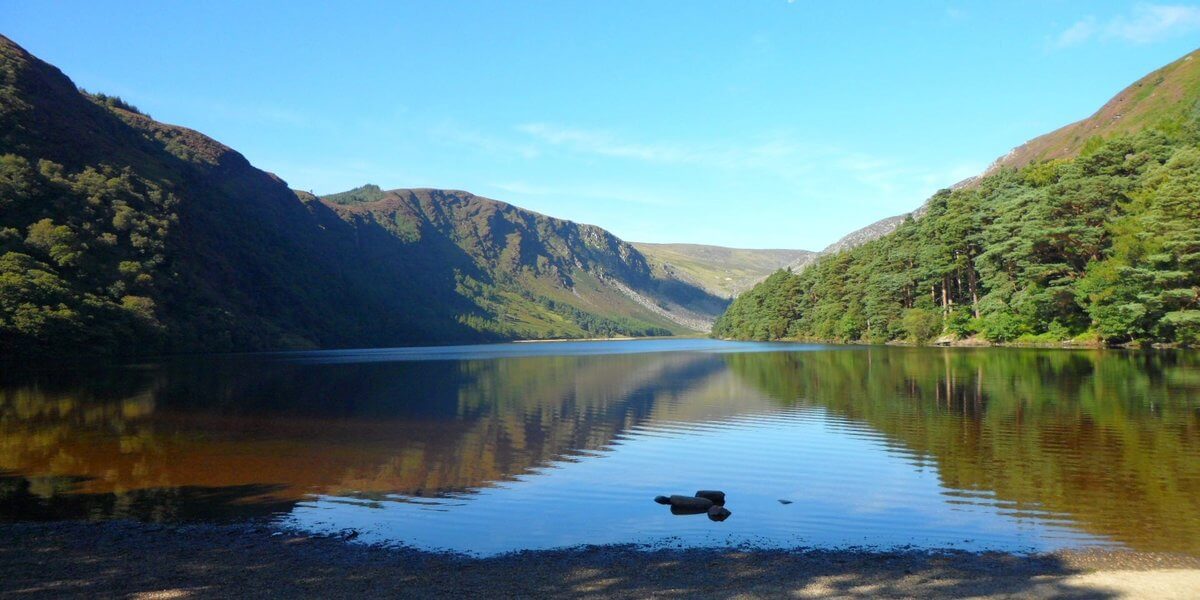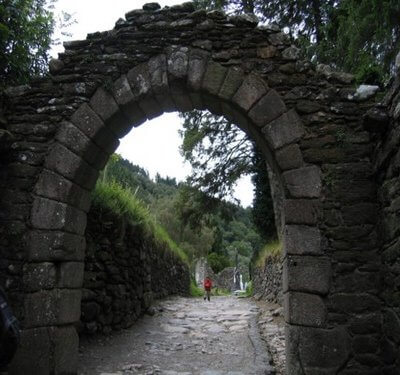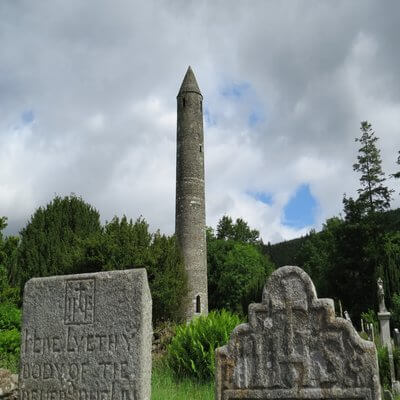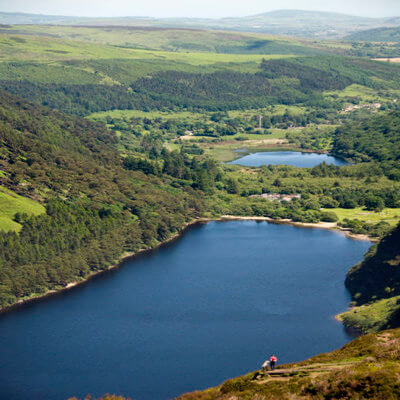Glendalough - What Makes It So Beautiful?

For thousands of years people have been drawn to ‘the valley of the two lakes‘ for its spectacular scenery, rich history, archaeology and abundant wildlife. Glendalough is a remarkable place and it’s no wonder it attracts visitors every year from all over the planet.
Glendalough Valley is located in the Wicklow Mountains National Park and has a number of different attractions to entertain and fascinate visitors. From its world-famous Monastic Site with Round Tower to its scenic lakes and valleys, it’s truly a magnificent area. Glendalough also offers a selection of walks and trails in the area, including the popular Wicklow Way, and also boasts a wonderful array of wild plants and animals.
Glendalough’s biggest attraction is the 6th-century monastic settlement, which was founded and built by St. Kevin. Most of the buildings that survive today date from the 10th through 12th centuries. Despite attacks by vikings over the years, Glendalough thrived as one of Ireland’s great religious foundations and schools of learning until the Normans destroyed the monastery in 1214 A.D. However, luckily for us, parts still remain and can be viewed to this day.
Glendalough’s monastery, also known as the city of the seven churches, was enclosed within a circular wall. The famous circular arch was built in roman style columns, meaning the stones were cut specifically to scale and they held themselves up without the need for mortar. If even one of the stones were to be removed the entire structure would collapse. The picturesque gateway has the title of being Ireland’s only surviving example of a medieval gateway to an early monastic city.

Another stand-out figure is the iconic Round Tower, which stands at 33 metres and was built almost 1000 years ago by the monks of St. Kevin’s monastery. It remains mostly intact to this day and the most popular theory is that the towers were used for defensive purposes. The monks took their treasures and hid inside the tower where they would be safe from raiders. The doorway, high up in the wall, made it difficult for unwanted guests to gain entry. Another theory is that the towers were used as bell towers.

Glendalough’s stunning lakes are also a major attraction in the area. The beautiful Upper Lake is located a short walk from the monastic settlement. There, on the banks of the glacial waters, lies the cave St Kevin called home for 7 years.
Nearby, you’ll find one of Wicklow’s most photographed and iconic sites – Lough Tay, aka the Guinness Lake. The beach on the northern side has bright white sand, which was imported by the Guinness family who’s estate runs through part of the Lough Tay area. The shape of the lake coupled with the white sand and dark, peaty waters make it look like a giant pint of Guinness! The stunning scenery of the lake makes it a lovely photo location. If you’re looking to visit mountains in Ireland, this is the place to be! The best viewing point from which to see Lough Tay is along the Military Road, at the junction with the Wicklow Way. From there, enjoy the magnificent views over the Wicklow Mountains and the enormous pint of Guinness – you can’t get more Irish than that!

Amongst the rolling hills, glistening glacial lakes and ancient historic sites, we have lots of creatures that call this place home. Wicklow National Park is host to an abundance of wildlife and flora. Cheeky characters such as the red fox (Sionnach / Madra Rua), fallow deer (fia buí), feral goat (gabhar fia) and otters (madra uisce) can be seen throughout the national park.
Before the park was even established, two mammals roamed this region that are now extinct. The giant Irish deer, or Irish elk, died out as a result of natural environmental changes. Sadly, these mountains once were home to the wolf that was later wiped out by man, leaving no natural predator to control the population of herbivores.

The hills, lakes and rivers in and around Glendalough are packed full of beautiful flora. Down through the years botanists have identified and recorded more than 800 different plant species in County Wicklow. This diversity includes many rare species and is due to the varied landscape within the area.
A trip from Dublin to Glendalough is one of the best day tours you can take from Dublin. There are some truly beautiful places in Ireland and to thoroughly experience Glendalough, we recommend taking our award-winning tour and seeing its stunning natural beauty with your own eyes.(opens in a new tab)